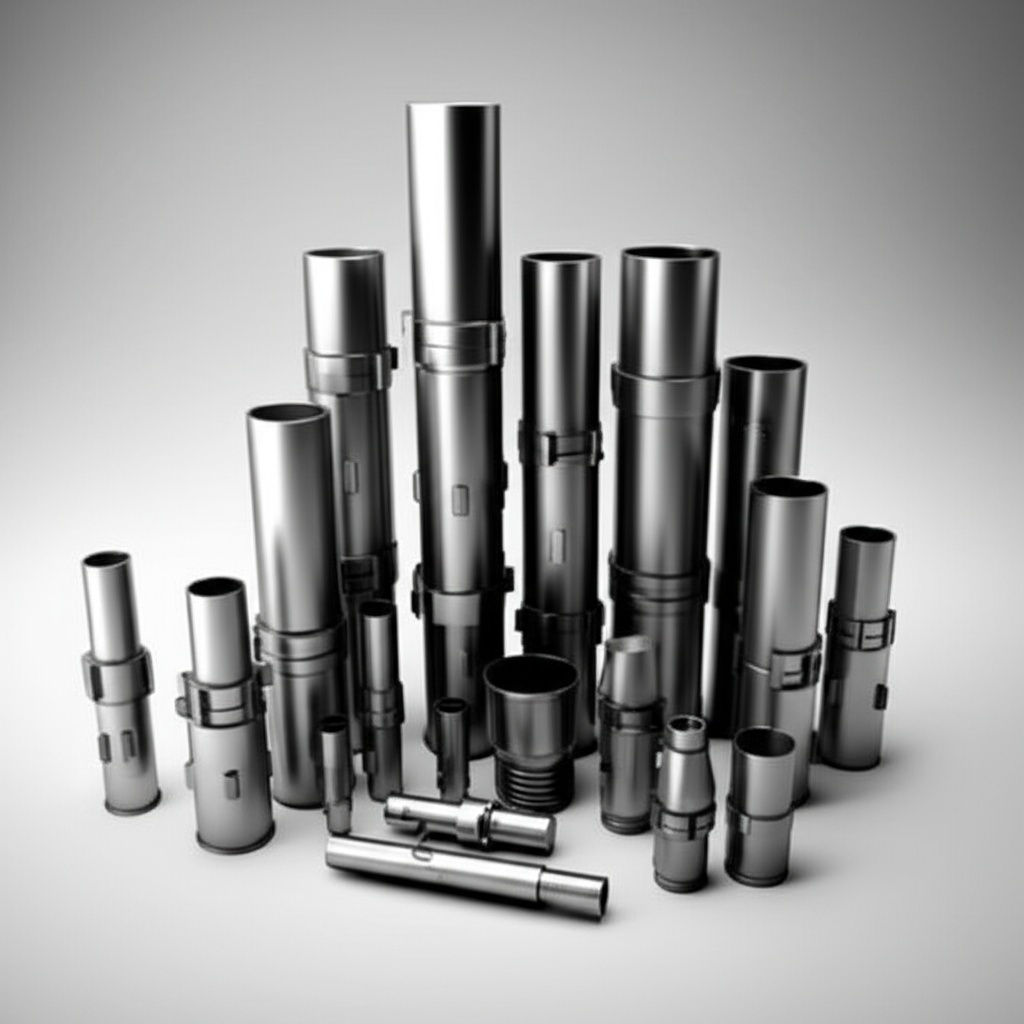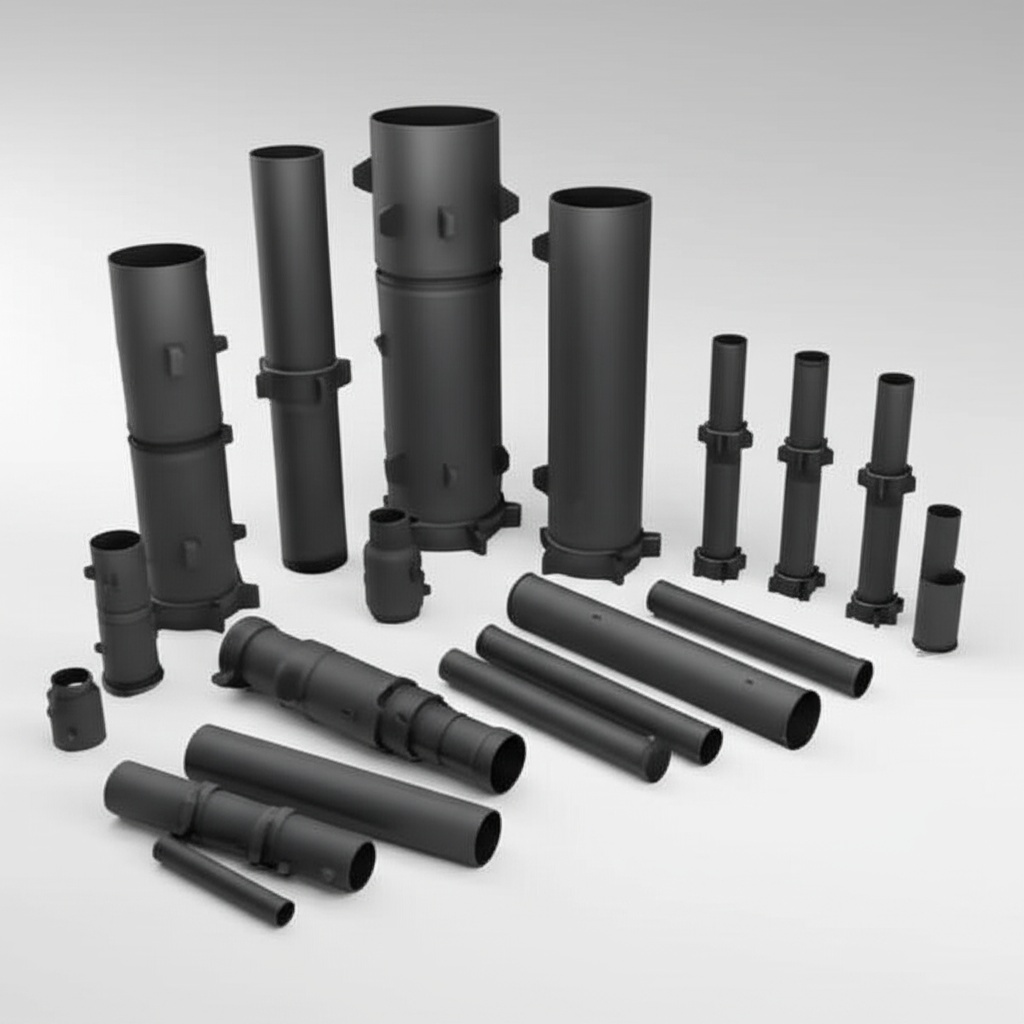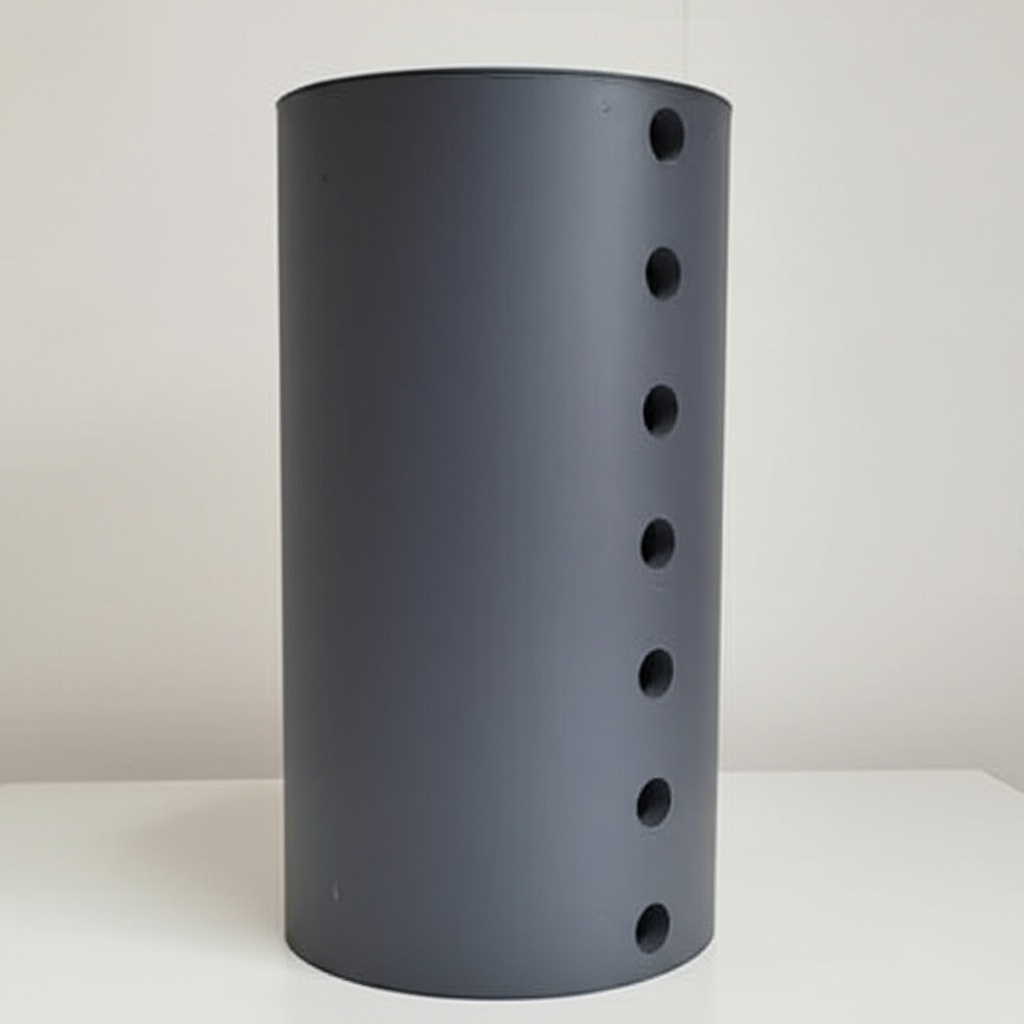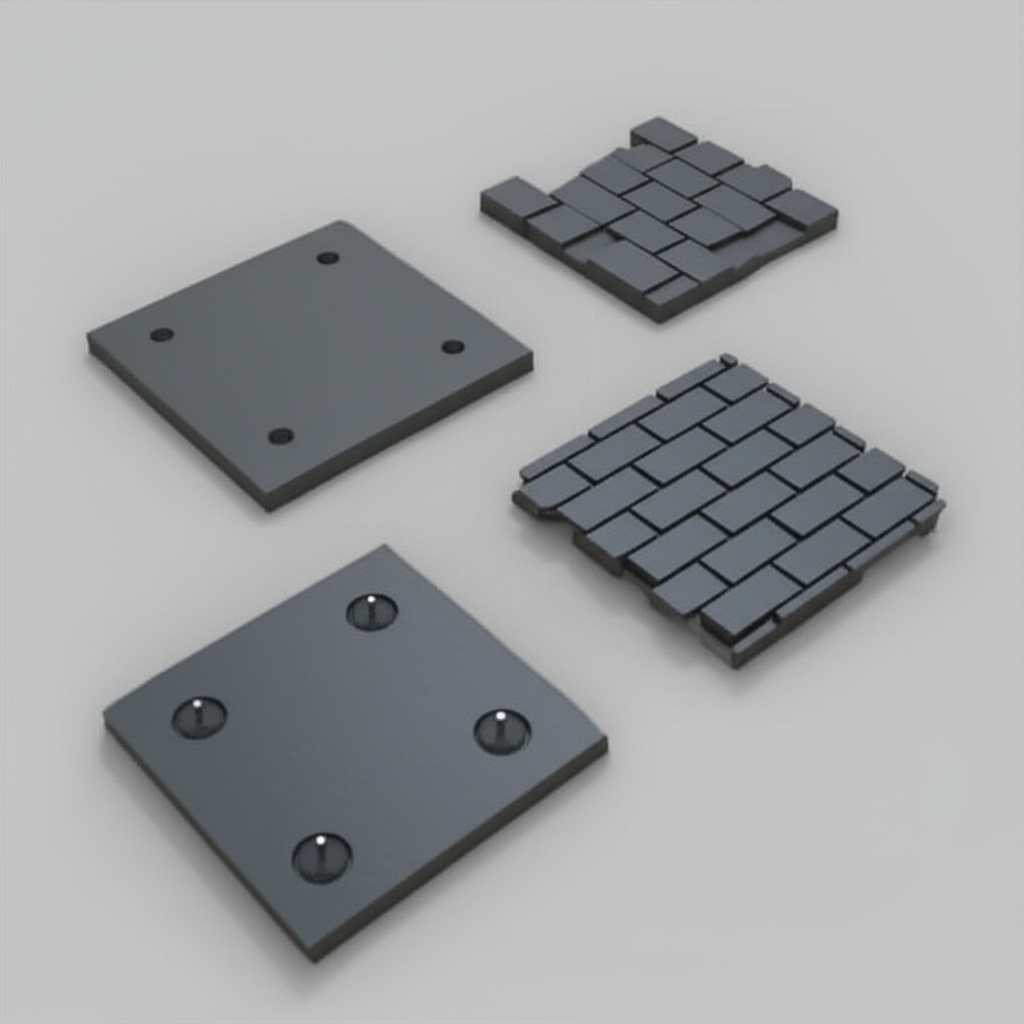Brazilian SiC Products for Industrial Application

Share
Brazilian SiC Products for Industrial Application
In the rapidly evolving landscape of industrial innovation, the demand for materials that can withstand extreme conditions while delivering superior performance is paramount. Among these, silicon carbide (SiC) stands out as a material of choice for its exceptional properties. This blog post delves into the world of custom silicon carbide products, with a particular focus on their burgeoning applications and availability for industrial use in Brazil. We aim to provide engineers, procurement managers, and technical buyers with a comprehensive guide to understanding, specifying, and sourcing high-quality SiC solutions.
What are Custom Silicon Carbide Products and Why are They Essential?
Custom silicon carbide products are advanced ceramic components engineered to precise specifications, leveraging the unique properties of SiC. As a compound of silicon and carbon, SiC boasts an impressive combination of characteristics that make it indispensable in demanding industrial environments. These include extraordinary hardness, high thermal conductivity, excellent resistance to thermal shock, superior chemical inertness, and impressive strength at elevated temperatures. Unlike standard materials, custom SiC parts are tailored to specific application requirements, ensuring optimal performance, longevity, and cost-effectiveness in highly specialized fields.
The essential nature of custom SiC stems from its ability to address the limitations of traditional materials in harsh operating conditions. From corrosive chemical processes to extreme temperatures in furnaces and the rigorous demands of high-power electronics, SiC provides solutions where conventional metals and plastics simply fail. This makes custom SiC not just an alternative, but often the only viable material for critical components in advanced industrial applications.
Main Applications of Silicon Carbide Across Industries
The versatility of silicon carbide allows it to be employed across a vast array of industries, driving innovation and efficiency. Its unique properties make it a cornerstone material in many high-tech sectors:
- Semiconductor Industry: SiC wafers and components are crucial for next-generation power devices, enabling higher power density, faster switching speeds, and reduced energy losses in applications like electric vehicles, renewable energy inverters, and power supplies.
- Automotive Companies: In electric vehicles (EVs) and hybrid vehicles, SiC power modules enhance the efficiency and range of powertrains. SiC is also used for wear-resistant components like seals and bearings in high-performance engines.
- Aerospace Companies: Its high strength-to-weight ratio, thermal stability, and wear resistance make SiC ideal for lightweight structural components, engine parts, and thermal management systems in aircraft and spacecraft.
- Power Electronics Manufacturers: SiC devices are revolutionizing power conversion, making inverters, converters, and chargers more compact and efficient for a wide range of industrial and consumer electronics.
- Renewable Energy Companies: SiC plays a vital role in solar inverters, wind turbine power converters, and energy storage systems, improving efficiency and reliability in renewable energy infrastructure.
- Metallurgical Companies: SiC is used in high-temperature furnace components, crucibles, and refractory linings due to its excellent thermal shock resistance and chemical stability.
- Defense Contractors: Its extreme hardness and ballistic properties make SiC a material of choice for lightweight armor, protective components, and high-performance missile parts.
- Chemical Processing Companies: The chemical inertness of SiC makes it perfect for pumps, valves, nozzles, and heat exchangers handling aggressive chemicals and corrosive fluids.
- LED Manufacturers: SiC substrates are increasingly used for high-brightness LEDs (HB-LEDs) and UV-LEDs, offering superior thermal management and light output.
- Industrial Equipment Manufacturers: From wear plates and nozzles to mechanical seals and bearings, SiC improves the lifespan and performance of machinery operating in abrasive or high-temperature environments.
- Telecommunications Companies: SiC is finding applications in RF devices and high-frequency electronics due to its excellent electrical properties.
- Oil and Gas Companies: Wear and corrosion-resistant SiC components are used in downhole tools, pumps, and valves to withstand harsh drilling and extraction conditions.
- Medical Device Manufacturers: Biocompatible and wear-resistant SiC can be found in some surgical instruments and medical equipment.
- Rail Transportation Companies: SiC power modules enhance the efficiency and reliability of traction systems in electric trains and locomotives.
- Nuclear Energy Companies: SiC composites are being researched for use in accident-tolerant fuels and structural components in nuclear reactors due to their radiation resistance and high-temperature stability.
Why Choose Custom Silicon Carbide?
While standard SiC components are available, the true power of this material is unleashed through customization. Choosing custom silicon carbide offers numerous advantages:
- Optimized Performance: Tailored designs ensure that components meet the exact requirements of a specific application, maximizing efficiency and performance.
- Enhanced Thermal Resistance: SiC maintains its strength and integrity at temperatures exceeding 1,500°C, far beyond the capabilities of most metals and other ceramics.
- Superior Wear Resistance: With a Vickers hardness approaching that of diamond, SiC offers exceptional resistance to abrasion and erosion, significantly extending component lifespan.
- Unmatched Chemical Inertness: SiC is virtually impervious to most acids, bases, and corrosive gases, making it ideal for aggressive chemical environments.
- Reduced Downtime and Maintenance: The durability and longevity of custom SiC components translate into fewer replacements and less downtime, leading to significant operational savings.
- Design Flexibility: Custom manufacturing allows for complex geometries and intricate features, enabling innovative solutions that are not possible with off-the-shelf parts.
Recommended SiC Grades and Compositions
Silicon carbide exists in various grades, each with unique properties suited for different applications. Understanding these compositions is crucial for selecting the right material for your custom SiC product:
| SiC Grade/Type | Description & Properties | Typical Applications |
|---|---|---|
| Reaction-Bonded SiC (RBSiC) | High strength, high stiffness, excellent thermal shock resistance, good wear and corrosion resistance. Contains free silicon. | Kiln furniture, mechanical seals, pump components, heat exchangers, ballistic armor. |
| Sintered SiC (SSiC) | Extremely high purity, excellent mechanical strength, superior corrosion and wear resistance, maintains strength at high temperatures. No free silicon. | Bearings, seals, nozzles, critical semiconductor components, high-temperature furnace parts. |
| Nitride-Bonded SiC (NBSiC) | Good strength and creep resistance at high temperatures, good thermal shock resistance, moderate cost. Contains silicon nitride as a bonding phase. | Refractory components, kiln furniture, wear parts, industrial linings. |
| Recrystallized SiC (ReSiC) | High purity, excellent thermal conductivity, good thermal shock resistance. Porous structure. | Radiant tubes, kiln furniture, heating elements, high-temperature structural components. |
| Siliconized SiC (SiSiC) | Similar to RBSiC, but often refers to grades with a higher silicon content, offering improved impermeability. | Mechanical seals, pump parts, wear components in corrosive environments. |
Design Considerations for SiC Products
Designing custom silicon carbide components requires careful consideration of the material’s unique characteristics to ensure optimal performance and manufacturability. Key factors include:
- Geometry Limits: SiC is a hard and brittle material, which impacts the complexity of achievable shapes. Avoid sharp internal corners and thin walls where possible, as these can be stress concentration points.
- Wall Thickness: Uniform wall thickness is preferred to minimize internal stresses during sintering and cooling. Variations can lead to warping or cracking.
- Stress Points: Identify and design around potential stress concentration areas. Radii on corners and transitions can help distribute stress more evenly.
- Tolerances: While SiC can be machined to high precision, extremely tight tolerances can increase manufacturing complexity and cost. Work with your supplier to define achievable and cost-effective tolerances.
- Joining and Assembly: Consider how the SiC component will integrate with other parts of the system. Brazing, adhesive bonding, or mechanical fastening methods should be planned for in the design phase.
- Surface Finish Requirements: The desired surface finish can impact manufacturing methods and cost. Understand whether a rough, ground, lapped, or polished finish is truly necessary for the application.
Tolerance, Surface Finish & Dimensional Accuracy
Achieving precise tolerances and specified surface finishes is critical for the functionality of many SiC components. Due to the inherent hardness of silicon carbide, machining and finishing are challenging, often requiring diamond grinding and lapping techniques.
- Achievable Tolerances: While typical tolerances for SiC can range from ±0.001″ to ±0.005″ (±0.025 mm to ±0.127 mm) depending on part size and complexity, significantly tighter tolerances are achievable with specialized post-processing.
- Surface Finish Options:
- As-fired/As-sintered: The natural surface finish after the firing process, typically rougher.
- Ground: Achieved through diamond grinding, providing a smoother surface and tighter dimensional control.
- Lapped: A highly precise finishing process that produces very flat and smooth surfaces, crucial for sealing applications.
- Polished: The finest surface finish, often used for optical applications or where extremely low friction is required.
- Dimensional Accuracy: Highly dependent on the manufacturing process (e.g., pressing, extrusion, slip casting) and subsequent machining. Close collaboration with the SiC supplier during the design phase is essential to define realistic and cost-effective accuracy targets.
Post-Processing Needs
After the initial firing or sintering, many silicon carbide components undergo various post-processing steps to achieve their final form, performance, and durability:
- Grinding: Essential for achieving precise dimensions and improving surface finish, typically using diamond abrasive wheels due to SiC’s hardness.
- Lapping & Polishing: Critical for applications requiring exceptional flatness, smooth surface finishes, and tight tolerances, such as mechanical seals and optical components.
- Sealing: For porous SiC grades, impregnation or coating might be applied to achieve gas or liquid impermeability.
- Coating: Specific coatings (e.g., CVD SiC, pyrolytic carbon) can be applied to enhance surface properties like wear resistance, corrosion resistance, or electrical conductivity.
- Joining: Brazing, diffusion bonding, or adhesive bonding techniques may be used to join SiC components to themselves or to dissimilar materials.
- Inspection: Non-destructive testing (NDT) methods like ultrasonic testing, X-ray inspection, and dye penetrant inspection are used to ensure material integrity and detect flaws.
Common Challenges and How to Overcome Them
While silicon carbide offers tremendous advantages, working with this advanced ceramic presents certain challenges:
- Brittleness: SiC is inherently brittle, meaning it has low fracture toughness. This makes it susceptible to chipping or breaking under impact or tensile stress.
- Mitigation: Design components to avoid tensile loads, incorporate radii at stress points, and handle parts carefully during manufacturing and assembly. Consider SiC composites for applications requiring higher toughness.
- Machining Complexity: Its extreme hardness makes SiC very difficult and expensive to machine, requiring specialized diamond tooling and techniques.
- Mitigation: Design parts with geometries that minimize the need for extensive post-sintering machining. Work with suppliers who have advanced SiC machining capabilities.
- Thermal Shock Sensitivity (for some grades): While generally good, rapid temperature changes can cause cracking in some SiC grades, particularly those with higher thermal expansion or lower thermal conductivity.
- Mitigation: Select SiC grades with high thermal shock resistance (e.g., RBSiC, SSiC). Design for gradual temperature transitions or incorporate features that allow for thermal expansion.
- Cost: Custom SiC components can have a higher initial cost compared to conventional materials.
- Mitigation: Focus on the total cost of ownership, considering the extended lifespan, reduced downtime, and improved performance that SiC offers. Optimize design to reduce material waste and machining time.
- Porosity (in some grades): Certain SiC manufacturing processes can result in porous structures, which might be undesirable for some applications requiring gas or liquid impermeability.
- Mitigation: Choose dense SiC grades like SSiC, or consider post-processing steps like sealing or coating for porous materials.
How to Choose the Right SiC Supplier
Selecting the right supplier for custom silicon carbide products is a critical decision that impacts the quality, cost, and delivery of your components. Consider the following factors:
- Technical Capabilities: Assess their expertise in various SiC manufacturing processes (e.g., pressing, extrusion, slip casting, sintering, reaction bonding) and their ability to produce complex geometries.
- Material Options: Ensure they offer the specific SiC grades and compositions that meet your application’s requirements (e.g., SSiC, RBSiC, NBSiC).
- Post-Processing Expertise: Verify their capabilities in precision grinding, lapping, polishing, and other finishing operations.
- Quality Control & Certifications: Look for ISO certifications and robust quality management systems. Request material data sheets and performance guarantees.
- R&D and Customization Support: A strong supplier will offer design assistance, material selection guidance, and the ability to develop bespoke solutions for unique challenges.
- Production Capacity & Lead Times: Ensure they can meet your volume requirements and deliver within your project timelines.
- Experience in Your Industry: A supplier with a proven track record in your specific industry (e.g., semiconductors, aerospace, power electronics) will better understand your needs and compliance standards.
When considering a reliable and technologically advanced partner for your silicon carbide needs, look no further than Sicarb Tech. We are proud to be a pivotal player in the silicon carbide industry, with our roots deeply embedded in Weifang City, China – widely recognized as the hub of China’s silicon carbide customizable parts factories. This region is home to over 40 silicon carbide production enterprises, collectively accounting for more than 80% of the nation’s total SiC output.
Since 2015, Sicarb Tech has been at the forefront of introducing and implementing cutting-edge silicon carbide production technology, significantly contributing to the large-scale production and technological advancements of local enterprises. We have witnessed and actively participated in the remarkable emergence and ongoing development of this vital industry.
Our foundation is strengthened by our affiliation with Chinese Academy of Sciences (Weifang) Innovation Park, an entrepreneurial park that collaborates closely with the National Technology Transfer Center of the Chinese Academy of Sciences. This national-level innovation and entrepreneurship service platform seamlessly integrates innovation, entrepreneurship, technology transfer, venture capital, incubation, acceleration, and comprehensive scientific and technological services.
At Sicarb Tech, we capitalize on the robust scientific and technological capabilities and the vast talent pool of the Chinese Academy of Sciences . Backed by the Chinese Academy of Sciences National Technology Transfer Center, we serve as a crucial bridge, facilitating the integration and collaboration of essential elements in the transfer and commercialization of scientific and technological achievements. We have established a comprehensive service ecosystem that spans the entire spectrum of the technology transfer and transformation process, ensuring more reliable quality and supply assurance within China.
We boast a domestic top-tier professional team specializing in the customized production of silicon carbide products. Our support has empowered over 504 local enterprises with our advanced technologies. We possess a wide array of expertise, including material science, process engineering, design, measurement, and evaluation technologies, along with an integrated process that covers everything from raw materials to finished products. This comprehensive capability enables us to meet the most diverse customization needs, offering you higher-quality, cost-competitive customized silicon carbide components in China.
Beyond supplying superior custom SiC components, we are also committed to empowering our partners globally. If you are considering establishing a professional silicon carbide products manufacturing plant in your country, Sicarb Tech can provide you with comprehensive technology transfer for professional silicon carbide production. This includes a full range of services (turnkey project) covering factory design, procurement of specialized equipment, installation and commissioning, and trial production. Our aim is to enable you to own a professional silicon carbide products manufacturing plant while ensuring a more effective investment, reliable technology transformation, and a guaranteed input-output ratio. For more information on how we can support your custom SiC needs, please visit our customizing support page or contact us directly.
Cost Drivers and Lead Time Considerations
The cost and lead time for custom silicon carbide products are influenced by several factors:
- Material Grade: Different SiC grades (e.g., SSiC vs. RBSiC) have varying raw material costs and manufacturing complexities, impacting the final price.
- Part Complexity & Geometry: Intricate designs, tight tolerances, and thin walls increase manufacturing difficulty, requiring more specialized machining and longer production times.
- Volume: Higher production volumes typically lead to lower per-unit costs due to economies of scale in material procurement and manufacturing setup.
- Post-Processing Requirements: Extensive grinding, lapping, polishing, or coating significantly add to both cost and lead time.
- Tooling & Molds: For custom shapes, initial tooling and mold development costs can be substantial, especially for complex designs.
- Quality Control & Testing: Rigorous testing and certification requirements can add to the overall cost.
- Supplier Location & Logistics: Shipping costs and lead times will vary based on the supplier’s location and your delivery requirements.
Lead times can range from a few weeks for simpler, smaller orders to several months for highly complex, large-volume, or novel custom components. Early engagement with your chosen SiC supplier is crucial to accurately forecast costs and delivery schedules.
Frequently Asked Questions (FAQ)
- Is silicon carbide truly stronger than steel?
While steel generally has higher tensile strength, silicon carbide possesses significantly higher hardness, compressive strength, and stiffness, particularly at elevated temperatures. It also has superior wear and corrosion resistance compared to most steels, making it ideal for abrasive or corrosive environments where steel would fail. - Can silicon carbide conduct electricity?
Pure silicon carbide is a semiconductor, meaning its electrical conductivity lies between that of a conductor and an insulator. Its conductivity can be precisely controlled by doping, making it ideal for power electronics applications. Some grades may have higher electrical resistivity depending on their bonding and impurities. - What is the maximum operating temperature for silicon carbide?
Silicon carbide can operate effectively at very high temperatures, typically up to 1,600°C (2,912°F) in oxidizing atmospheres, and even higher in inert atmospheres. This far surpasses the temperature limits of most metals and many other ceramic materials. - How does the cost of custom SiC compare to other advanced ceramics?
The cost of custom SiC can vary widely depending on the specific grade, complexity, and volume. Generally, SiC components can be more expensive than alumina but often more cost-effective than materials like silicon nitride for certain applications, especially where its unique combination of properties is critical. The long-term benefits of SiC, such as extended lifespan and reduced maintenance, often justify the initial investment. - What are the main advantages of using custom SiC over standard, off-the-shelf components?
Custom SiC components are specifically engineered to meet unique application demands, optimizing performance, fit, and longevity. This allows for precise tailoring of material properties and geometries, leading to higher efficiency, reduced material waste, and the ability to solve specific engineering challenges that off-the-shelf parts cannot address effectively.
Conclusion
Custom silicon carbide products represent the pinnacle of advanced ceramic engineering, offering unparalleled performance in the most demanding industrial environments. From the critical components in semiconductor manufacturing and electric vehicles to the resilient parts in aerospace and high-temperature processing, SiC delivers solutions that conventional materials simply cannot match. By understanding the various grades, design considerations, and post-processing needs, and by partnering with a technically proficient and reliable supplier like Sicarb Tech, industries in Brazil and beyond can unlock the full potential of this extraordinary material.
The investment in custom SiC components is an investment in long-term reliability, efficiency, and innovation, ensuring that your industrial applications perform optimally and maintain a competitive edge in a rapidly evolving global market. Embrace the power of custom silicon carbide to elevate your engineering solutions to new heights.

About the Author: Sicarb Tech
We provide clear and reliable insights into silicon carbide materials, component manufacturing, application technologies, and global market trends. Our content reflects industry expertise, practical experience, and a commitment to helping readers understand the evolving SiC landscape.




